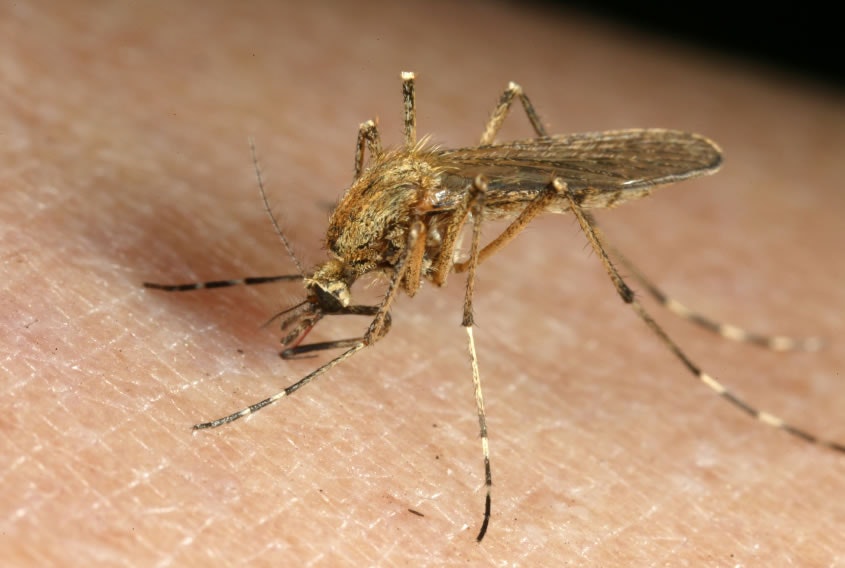Summer Salt Marsh Mosquito (Aedes dorsalis)

The Summer Salt Marsh Mosquito (Aedes Dorsalis) is one of 53 types of mosquitoes that occur in California. It is a brilliant gold colored aggressive day biting mosquito that breeds in a variety of brackish and fresh water habitats. This species is found in California coastal salt marshes and the brackish waters of the Sacramento and San Joaquin Delta. Total developmental time, from egg to adult, has been observed to occur in less than one week.
This species is found between March and October in the tidal salt marsh areas and brackish seasonal wetlands of Napa County. The eggs are laid on plants and muddy areas of these wetlands and hatch when the breeding site is filled by high tides or spring rains. Adults are an aggressive daytime biting species capable of flying many miles from the marshes in search of a blood meal.
Diseases Transmitted
Summer Salt Marsh Mosquitoes are a serious pest when they are present in large numbers. This mosquito is also a secondary vector of California and Western Equine Encephalitis viruses.
Life Cycle
Summer Salt Marsh Mosquitoes have four life stages: egg, larva, pupa, and adult. The immature stages need standing water to complete their life cycle.
After an adult female lays her eggs they hatch into larvae (wrigglers), which feed on small organic particles and microorganisms in the water. Feeding occurs when they hang from the water’s surface by the tip of their tail (siphon) or by browsing along the bottom of their habitat. Because they are air breathing organisms they must return to the water’s surface to breathe. About five to ten days are required for larval development. At the end of the larval stage, the mosquito molts and becomes the aquatic pupa (tumbler). The pupa is active only if disturbed, for this is the resting stage where the larval form is transformed into the adult. This takes about two days during which time feeding does not occur. When the transformation is completed, the new adult splits the pupal skin and emerges. Under optimum conditions, development from egg to adult can occur in last than one week. However, all mosquito developmental times are dependent on the temperature and nutrients of the water in which they mature.
Adult Daily Activity
Adults prefer open habitats such as grasslands, salt marshes and edges of woodlands. Females are readily attracted to green, grassy fields and will rest there waiting for available hosts. Male mating swarms tend to occur over low growing bushes, prominent objects and open fields. Mating usually occurs on the marsh within a few days of adult emergence and is followed by random dispersal of host seeking adults.
Adult Flight Range
Adults are capable of traveling up to 30 miles from their breeding habitat although typical dispersal patterns are less than 10 miles.
Adult Feeding
Host studies have shown that large mammals are preferred, especially cattle and horses. This species will readily bite humans and there have been rare instances where medical attention was required for people reacting to multiple bites. Biting occurs most often during the daylight hours and at dusk.
Eggs and Larvae
Eggs are laid singly on the mud along the edge of tidal pools or the receding water line of brackish seasonal wetlands. Winter is passed in the egg stage and hatching occurs with the first warm weather of spring. Additional hatches occur with subsequent refloodings of the larval habitat. It should be noted that the eggs can remain viable for many years with only part of any one batch of laid eggs hatching during any single flooding event.
The larval stage can last from 4-14 days with duration being primarily dependant on temperature. Competition for space as well as quality and availability of nutrients also affects larval developmental rates. Larvae are capable of completing their development in water with salt concentrations as high as 120 ppt (3.33 times seawater). Optimum survivorship of larvae is in water with salt concentrations near that of seawater (36 ppt).
